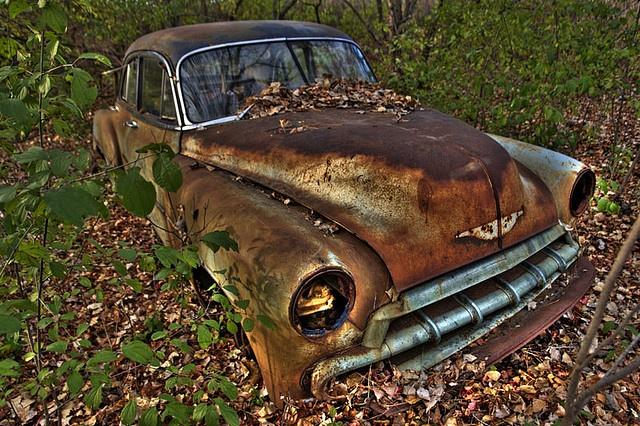
How Rust Affects Your Car's Safety and Value: A Simple Guide

Impact of Rust on Vehicle Safety
Rust significantly compromises the structural integrity of a vehicle. The metal framework of a car is designed to support the body and absorb impact in the event of an accident. When rust eats away at this metal, it weakens these vital components. This deterioration reduces the vehicle's ability to protect passengers, making it more dangerous in a crash. Places like the floor pan and chassis, which should be strong and resilient, become fragile and prone to bending or breaking.
Apart from the structural frame, rust affects crucial safety features. The braking system, for instance, relies heavily on solid metal parts like rotors and calipers. Rust can cause these components to seize or function improperly, increasing stopping distance and boosting the risk of accidents. Similarly, rust in the suspension system can lead to a rough ride and compromised control. Shocks and struts, which help cushion bumps and stabilize the car, may no longer work as expected if rust has compromised them.
Overall, rust transforms your reliable vehicle into a potential hazard. By damaging structural parts and key safety systems, it undermines both passenger protection and driving safety. Ignoring rust problems increases the likelihood of malfunctions and accidents, emphasizing the need for regular checks and preventive measures.
Economic Impact: Rust and Vehicle Value
The presence of rust dramatically affects a car's resale value. Buyers are generally hesitant to invest in vehicles with visible rust, as it suggests neglect and potential hidden damage. Rust isn’t just an eyesore; it’s a red flag that points to costly repairs and future problems. A rust-free car is more appealing, stands out in the used car market, and can command a higher price.
The costs associated with rust repairs compound the economic impact. Fixing rust damage often involves more than just treating the surface. It may require replacing parts, performing bodywork, and applying new undercoating for protection. These repairs can be expensive, and if rust issues are extensive, they might exceed the vehicle's market value, making selling it or trading it in harder. Routine maintenance that prevents rust, such as sealing and coatings, saves money in the long run by preserving the car's condition and value.
Rust not only affects the immediate appearance of a car but also carries a significant economic toll. By diminishing both the appeal and functioning of the vehicle, rust depreciates value significantly. Car owners stand to gain by addressing rust early, maintaining their vehicles, and safeguarding against further damage. This effort ensures they get the best possible return if they decide to sell or trade their rust-free car.
Recognizing Early Signs of Rust
Spotting rust early can save you from hefty repair bills and safety issues down the line. One of the first signs to watch for is discoloration on surfaces, especially where paint is chipping or peeling. This often indicates the start of rust beneath the surface. Another warning sign is bubbling paint, which signals that rust is eating away at the metal underneath.
It's essential to examine key areas regularly. Look at the wheel wells, the underside of the car, exhaust system, and around the door edges. These spots are prone to rust due to their exposure to water, road salt, and debris.
Develop a habit of regular rust inspections to address any issues right away. Using a flashlight and a simple mirror can help you see hard-to-reach areas. Scheduling periodic professional inspections is also wise, as mechanics have the tools and knowledge to spot rust in its early stages. Keeping an eye out for these signs and catching them early can help maintain your vehicle's safety and value.
Prevention and Protection Strategies
Preventing rust is all about proactive care and protection. Start by keeping your car clean; wash it regularly to remove dirt, salt, and other contaminants that promote rust. Pay special attention to the undercarriage, as road salt and grime often build up there. Drying your vehicle after washing is crucial, especially in hidden areas where water can linger.
Environmental conditions also play a role in rust prevention. If possible, park in a garage or use a car cover to protect your vehicle from harsh weather. Keeping the car dry and sheltered can significantly reduce the risk of rust developing.
Undercoating provides excellent protection against rust. This treatment creates a barrier between the metal parts of your car and the elements. It’s especially beneficial for the undercarriage, frequently exposed to road debris and moisture. Routine application of protective treatments can ensure long-lasting defense against rust, preserving both safety and value.
Conclusion
Addressing rust proactively is crucial for maintaining your vehicle's safety and value. From understanding how rust affects essential car features to recognizing its impact on market value, keeping rust at bay ensures your car remains reliable and valuable. Early detection and preventive measures like undercoating and regular inspections are invaluable in managing rust issues. By taking these steps, you not only enhance your car’s safety but also protect your investment.
Ready to shield your vehicle from rust's damaging effects? At Rustless Rides™, we're experts in rust protection and undercoating. Our professional services are designed to protect your car from rust, ensuring its safety and value for the long haul. Contact us today to learn how we can help you keep your ride rust-free and in optimal condition.